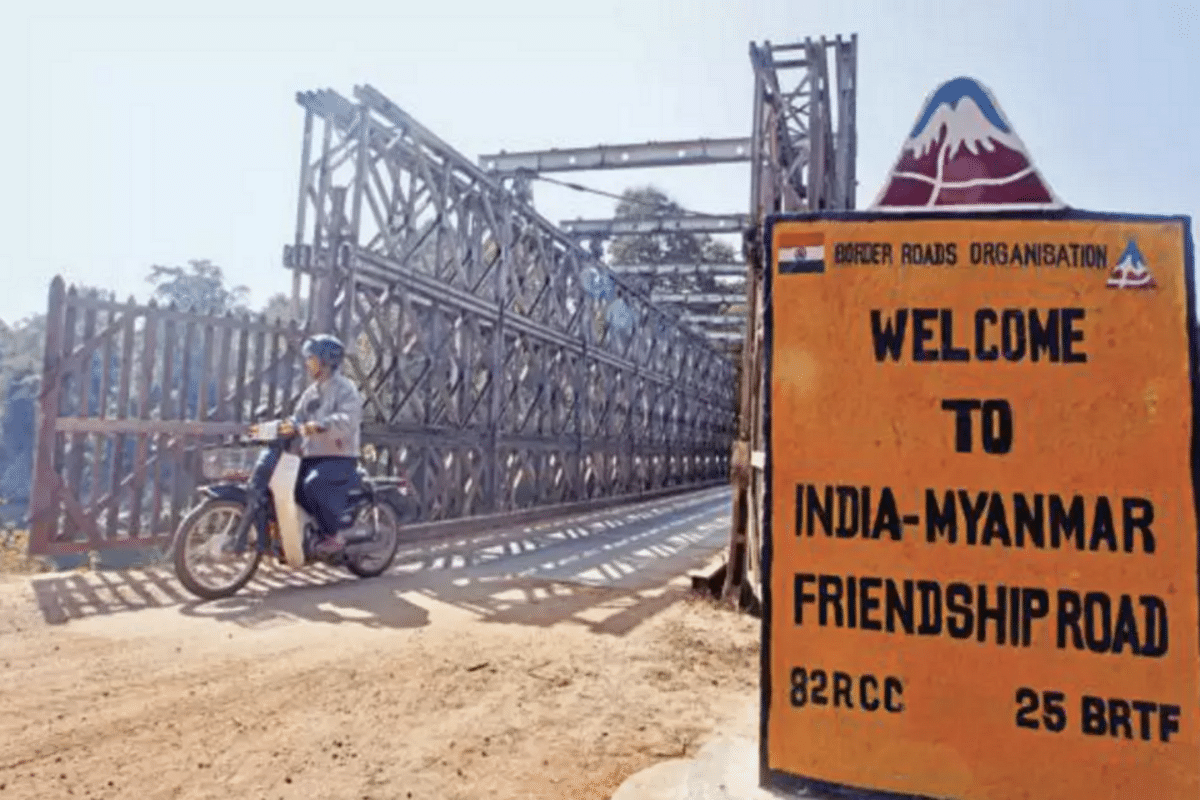Infrastructure
India-Myanmar-Thailand Trilateral Highway: Paving The Road Of Opportunity And Friendship With ASEAN
- The 1,360-kilometre-long is projected to boost trade and business within the ASEAN-India Free Trade Zone as well as throughout Southeast Asia.

Part of the India-Myanmar-Thailand Trilateral Highway (Mekong-Ganga Cooperation Official Website)
According to Union Minister Nitin Gadkari, almost 70 per cent of the construction work on the ambitious India-Myanmar-Thailand Trilateral Highway (IMTTH) has been completed.
India, Thailand, and Myanmar are constructing a 1360-kilometre-long motorway that will connect the country to Southeast Asia by land and strengthen commerce, business, health, education, and tourism relations between the three countries.
"Around 70 per cent of the project's work is completed," the minister of Road Transport and Highways told PTI in response to a question about the project's progress.
Moreh in Manipur, India, would be linked to Mae Sot in Thailand via Myanmar via the highway.
The project was first proposed in 2002 in a trilateral ministerial meeting.
The IMTTH is part of the Transnational Asian Highway comprising 1,41,000 kilometres of roads passing through 32 member countries.
The IMTTH includes the building of 78 kilometre of new roads, the upgrading of about 400 kilometre of existing highways, the installation of all-weather approach lanes, and the repair and reconstruction of weak or distressed bridges.
India's Contribution
India is building two sections of the Trilateral Highway in Myanmar: the 120.74 km Kalewa-Yagyi road section and the 160 km Tamu-Kyigone-Kalewa (TKK) road section, which includes 69 bridges and an approach road, under Look East policy.
The work on both these sections was awarded in Engineering, Procurement and Construction mode in May 2018 for the Kalewa-Yagyi section and November 2017 for the TKK section.
The National Highways Authority of India (NHAI) has been appointed as the project's technical executing agency and project management consultant.
The estimated cost of completing the IMT trilateral highway stretch between India and Myanmar is Ra 1,177 crore.
The above-mentioned projects are being funded by the Government of India under grant assistance to the Government of Myanmar.
The strategic highway project is being postponed. Previously, the government planned to open the route in December 2019.
Opportunity for India’s North East through the IMTTH
The problem of economic underdevelopment in India's North East is exacerbated by the region's limited accessibility. Inadequate road infrastructure has a direct impact on growth and development and is one of the primary reasons for the region's lag behind the rest of the country.
While geopolitical isolation at the time of the country's split in 1947 is one of the explanations, geographical characteristics have also limited accessibility to the region, especially into the valley sections of Assam.
As a result, total capacity and upkeep levels of road infrastructure are far from sufficient, particularly in hilly locations.
Only the 22-kilometre-wide Chicken's Neck [Siliguri Corridor] connects the North East to the rest of India by rail and road. Given the region's predominant steep topography, roads are a crucial form of transportation and a lifeline, as alternative modes of transportation are either prohibitively expensive or difficult to develop.
The IMTTH, which aims to connect Morehto Mae Sot, would improve the road network in the north East India, allowing for an increase in the flow of products, services, and people transportation.
Look East Policy
The relevance of ancient millennia-old connecting networks utilised for the free flow of people, trade, and culture has been rediscovered and boosted by the Look East and Act East policies.
The Indian government's Look East Policy is an endeavour to build and strengthen economic and geopolitical links with Southeast Asian states in order to secure India's position as a regional power.
This policy also positions India as a counterweight to the People's Republic of China's strategic influence in the area.
Look-East Connectivity:
South and East Asian trade accounts for over 45 per cent of India's total international trade. Myanmar and Association of Southeast Asian Nations (ASEAN) countries are included in India's Look East Policy.
Way Forward
Trade between India and its neighbours has been hampered by a lack of sufficient physical infrastructure such as road and rail links, inadequate border crossing locations, and so on.
As India seeks to improve its manufacturing output capabilities and integrate deeper into the global supply chain, the construction of a strong internal and external communication network becomes critical.
The need is to capitalise on the potential of India's North East, which shares international boundaries with countries in South and Southeast Asia and is rising as one of the world's most active economic regions.
While India continues to establish linkages towards Southeast Asia, structural and institutional shortcomings must be addressed. The connectivity goal of India has been a crucial component in determining its engagements with its immediate neighbours, and it is based on the overarching premise of ensuring progressive growth in all aspects.
The IMTTH provides access to a broader dimension of connectivity and will contribute in the successful implementation of activities envisioned in India's current Act East Policy.
Support Swarajya's 50 Ground Reports Project & Sponsor A Story
Every general election Swarajya does a 50 ground reports project.
Aimed only at serious readers and those who appreciate the nuances of political undercurrents, the project provides a sense of India's electoral landscape. As you know, these reports are produced after considerable investment of travel, time and effort on the ground.
This time too we've kicked off the project in style and have covered over 30 constituencies already. If you're someone who appreciates such work and have enjoyed our coverage please consider sponsoring a ground report for just Rs 2999 to Rs 19,999 - it goes a long way in helping us produce more quality reportage.
You can also back this project by becoming a subscriber for as little as Rs 999 - so do click on this links and choose a plan that suits you and back us.
Click below to contribute.
Latest